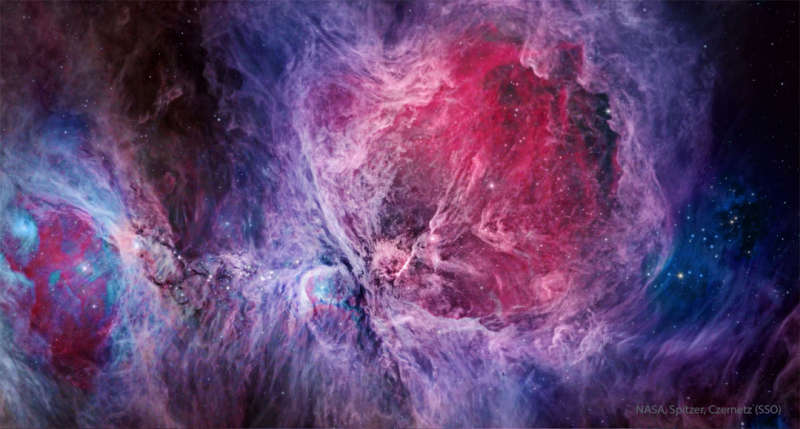 |
Астронет: Астрономическая картинка дня Туманность Ориона в видимом и инфракрасном свете http://variable-stars.ru/db/msg/1956572 |
Авторы и права: Инфракрасное излучение: НАСА,
Космический телескоп "Спитцер";
Видимый свет:
Оливер Чернец,
Обсерватория Сайдинг-Спринг
Перевод: Д.Ю.Цветков
Пояснение:
Большая туманность Ориона окрашена в разные цвета.
Невооруженным глазом она видна как маленькое
размытое пятнышко в созвездии Ориона.
Однако
многоцветные изображения
с длинными экспозициями, как представленное здесь, показывают, что
туманность Ориона
– сложный комплекс из молодых звезд, горячего газа и темной
пыли.
На этом
составном цифровом изображении
запечатлены не только три цвета
видимого света, но и четыре цвета
инфракрасного диапазона, зарегистрированные
орбитальным телескопом
НАСА
"Спитцер".
Энергию для свечения большей части туманности Ориона (M42) дают четыре из ярчайших
звезд в туманности –
Трапеция Ориона.
Многие из показанных здесь
волокон являются
ударными волнами
– фронтами, на которых быстро движущееся вещество сталкивается с медленно текущим
газом.
Размер туманности Ориона – около 40 световых лет.
Она
удалена от нас на 1500
световых лет и находится в одном
спиральном рукаве
нашей Галактики с
Солнцем.
Authors & editors:
Robert Nemiroff
(MTU) &
Jerry Bonnell
(USRA)
NASA Web Site Statements, Warnings,
and Disclaimers
NASA Official: Jay Norris.
Specific
rights apply.
A service of:
LHEA at
NASA /
GSFC
& Michigan Tech. U.
